There are many amazing animals living in the world. It might take a long time to go through them all, but here is a list of some of the most incredible animals living in the northern hemisphere. (part 1).
SQUIRREL – a small mammal that lives in trees and eats as well as stores nuts. Fun fact! Squirrels often forget where have they stored their nuts for the winter and they eventually start growing into trees.
SKUNK – a medium sized mammal with black fur and white stripes that uses smelly gas to scare off predators and avoid harm.
RACOON – a medium sized mammal which has grey fur and a mask like black fur around its eyes. In British English Racoon is spelled with one ‘c’ and in American English it is spelled with double ‘cc’ like this – raccoon. If you want to learn about more interesting differences between American and British English, subscribe to our weekly lessons!
HEDGEHOG – a small animal that has spikes on its back meant from protection. When there is danger near the animal curls up into a ball making its softer parts, such as the belly, impenetrable.
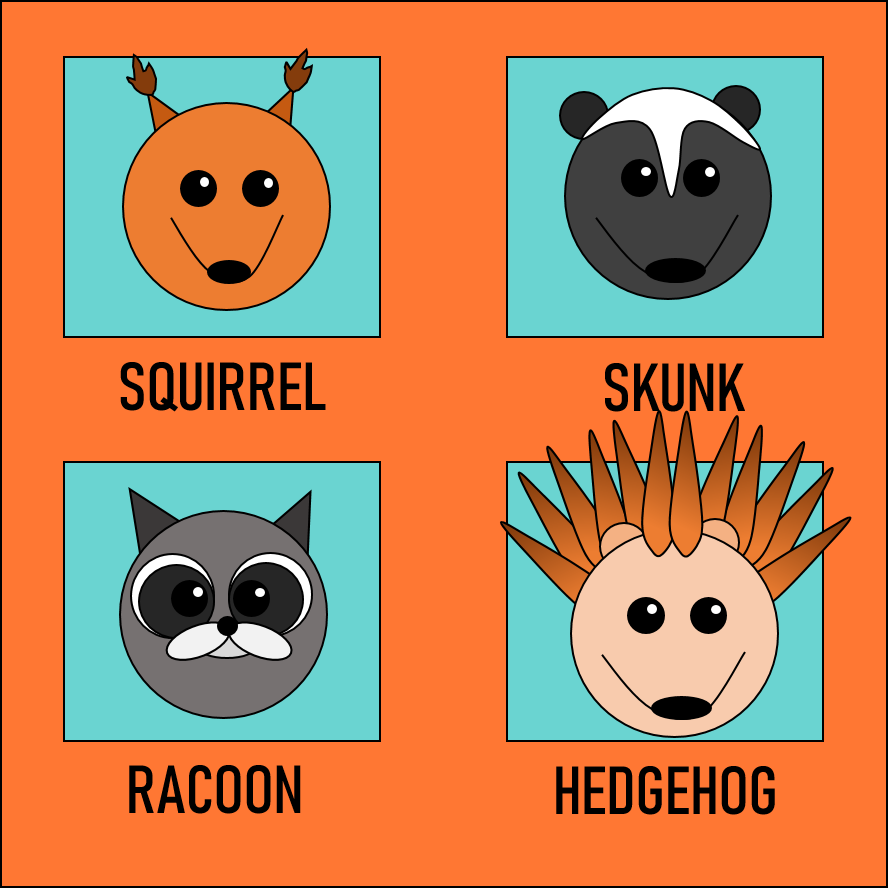
BEAR – A large mammal that has thick brown or black fur and massive strong claws. Bears, in contrast to popular belief, are not carnivore and do not rely on eating meat, instead they can survive on berries and other plant-goods, though if presented with fish, bears will gladly accept it. Because of this bears are considered omnivores.
WOLF – the largest predator from the dog family, usually identified by its grey fur. Wolves live in packs and are very close with their family members.
FOX – a smaller member of the dog family, known for its orange-brown fur and a bushy tail. Foxes are one of the smartest medium-sized predators in the Northern Hemisphere.
BOAR – a wild pig which is covered in fur. The signature feature of boars is their tusk, which is not found in their domesticated counterparts.
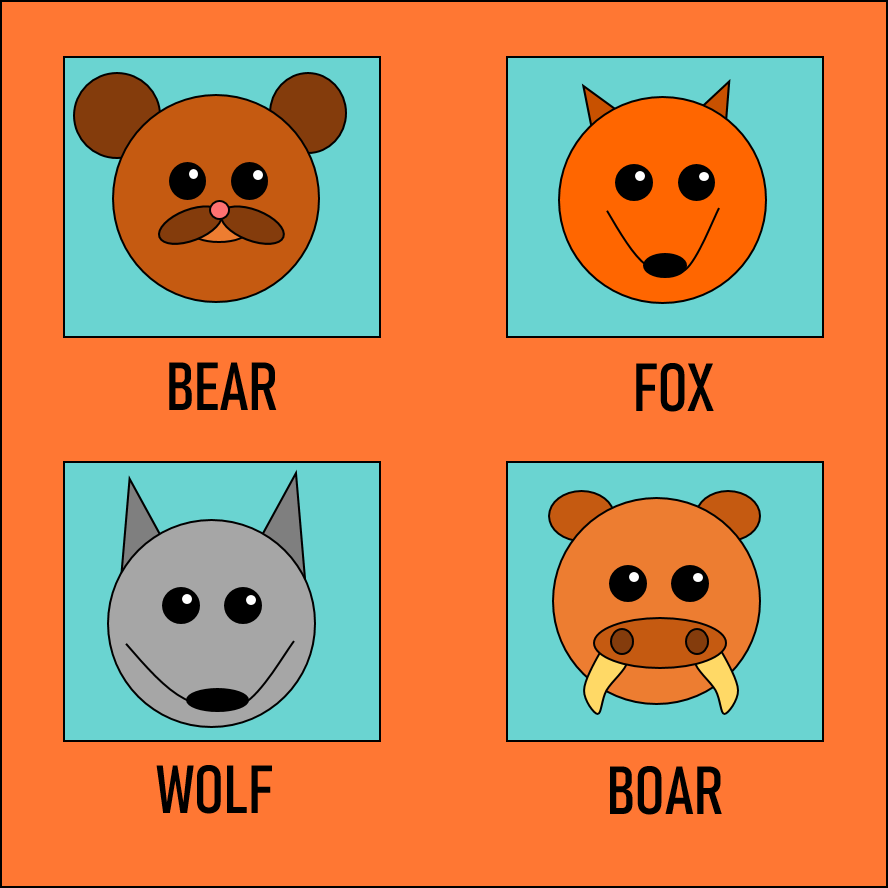
DEER – a slender-legged animal usually living with families rather than alone. Its identifying features are brown fur, tiny rounded tail and large antlers for males, which they shed annually.
MOOSE – a large deer with big thick antlers and a beard like fur hanging from its neck. Moose is the largest member of the deer family with males growing more than 2 meters in height and over 700 kilograms in weight.
BISON – a wild ox, which unlike its domesticated counterparts has fur and beard-like fur hanging from underneath its neck. Identifying features include humpback, horns and shaggy hair.
RAM – a bighorn sheep male which lives in the mountains. Rams often have fights to resolve conflicts surrounding their superiority, mating and food issues. They fight by repeatedly slamming their horns against each other.
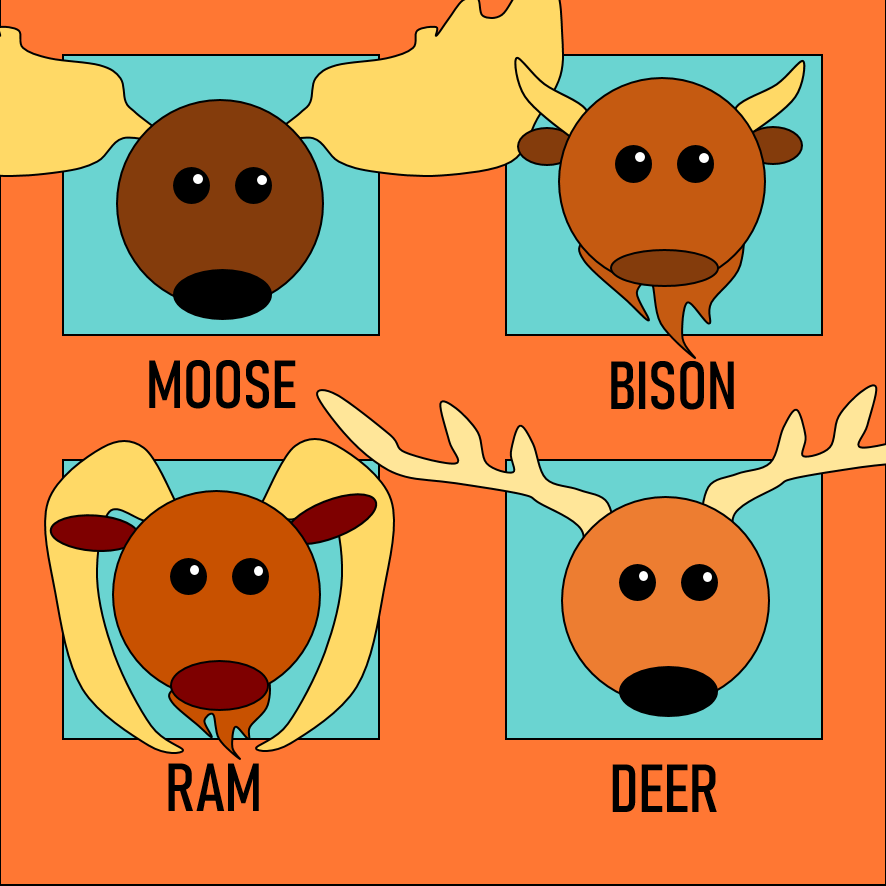
DOG – a domesticated mammal that comes in small, medium and large sizes. Dogs are primarily carnivore and largely depend on meat consumption to survive. Dogs are known for their loyalty and friendliness.
RABBIT – a small mammal, which is known for its long ears. The ears of the rabbit can be both pointy and stand up and be hanging on the sides of the rabbits face. Rabbits are considered one of the greatest jumpers on earth.
FISH – a variously sized animal that has fins and gills and lives underwater. Fish can be found all over the world and come in many different breeds. Fish are usually categorized by type of water they inhabit, it can be sea water of fresh water.
CAT – a small domestic carnivorous animal, which is naturally a hunter and preys on small rodents and bird. Cats are known for their incredible night-sight and fast reactions which helps them survive. Fun fact! Most cats will always land on their feet when falling.
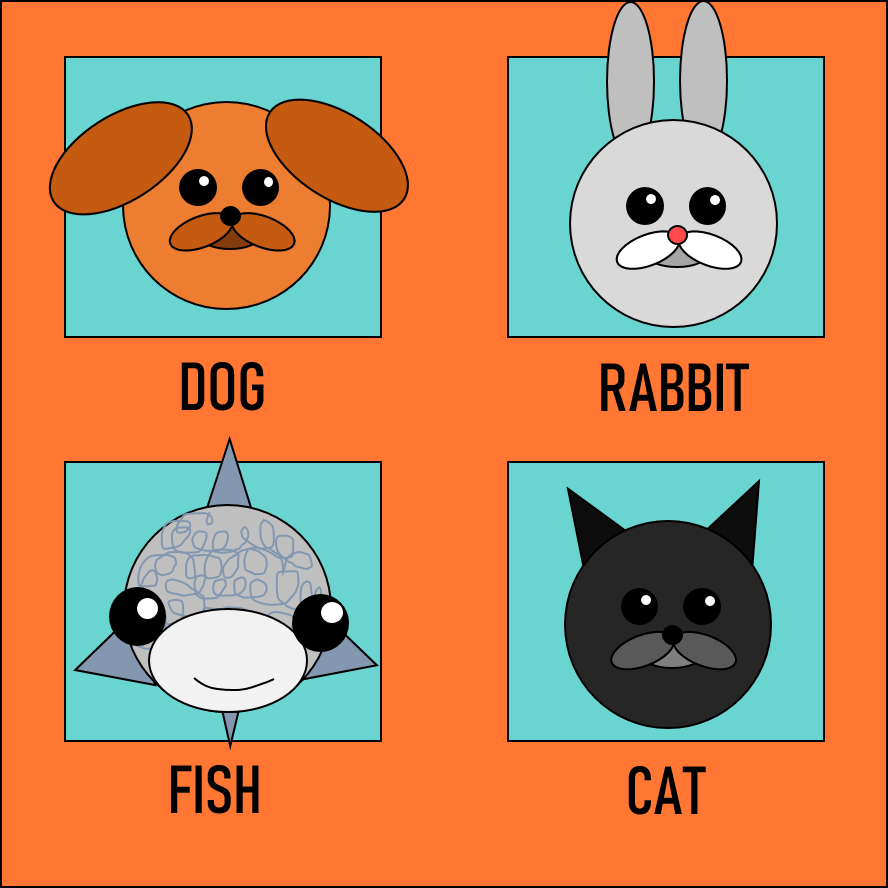
HORSE – a large herbivorous mammal which has been domesticated. Horses are used for riding, racing and carrying heavy loads. Horses also help farmers in various tasks.
COW – a large domesticated mammal, which is known for its ability to produce milk that is drunk by humans. Cows are identified by their horns, teats and a large frame. Although usually portrayed as white with black spots, cows can come in a variety of fur colours including brown and black.
CHICKEN – a medium-sized domesticated bird, which produced eggs. Used for meat and kept in groups, usually with several females and one male present in the group.
DONKEY – a domesticated mammal of the horse family. It is known for its long pointy ears and elongated face. Although sometimes it is ridden unlike horses, donkeys are much more often used for carrying stuff.

GOAT – a domesticated mammal, which like cows produced milk that humans drinks and that can be made into dairy products such as cheese and butter. Goats are known for their horns and beard-like fur underneath its mouth.
SHEEP – a domesticated mammal known for its thick wooly coat. The wool is shaved off the animal to produce materials for clothes and bedding. Sheep are also kept for meat. They are known for being flock animals and often follow their flock easily.
PIG – a domesticated omnivorous mammal, usually kept for its meat. Pigs have flat snouts that are used for digging in the dirt. Fun fact! Due to their anatomy pigs cannot lift their head and look up.
TURKEY – a partially domesticated large bird, which is kept for its meat. The signature features of the turkey are its bald head and skin hanging from its beak (for males).
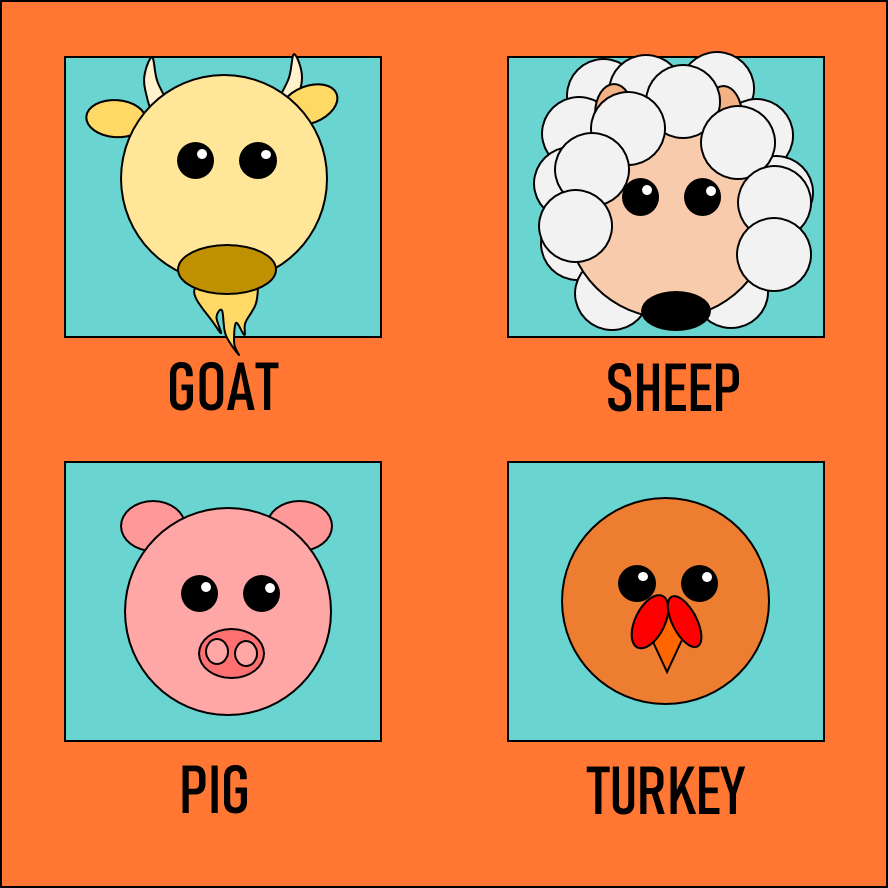
Want to learn more about Northern Hemisphere animals? Look out for part 2 of the list! Coming soon to sciencebird.org
